Where the Wild Beans Are: Working with ASOMOBI
Where the Wild Beans Are: Working with ASOMOBI
Community Engagement with the women’s coffee group of Biolley, Costa Rica
Last week, I traveled with four of my classmates far into the Talamancan mountains in southern Costa Rica to learn from ASOMOBI in the small town of Biolley, Costa Rica. ASOMOBI stands for Asociación de Mujeres Organizadas de Biolley. For those of you that aren’t familiar with Spanish, that translates to the Association of Organized Women of Biolley. Read below for history of this incredible group, and a recount of my adventures:
History of ASOMOBI
In the mid-1990s, the men of Biolley left the community in search of better work opportunities. They took off for San Jose or even the United States, leaving the women of the community with no way to earn a living. So, the women got together, and eventually determined that they wanted to produce coffee. Coffee fields were already abundant in the area, and they felt that they could improve the value of the coffee by milling it right in Biolley. The women constructed everything with some help from the men – after they convinced them that this was a serious venture, that is. But, after struggling to get on their feet, they sought help from coffee buyer Grace Mena, who worked to help them understand the process needed for producing quality coffee and making a name for themselves. Finally, after 2 years, ASOMOBI was able to commercialize their product and earn income.
Since then, ASOMOBI has put all of their earnings back into the community of Biolley. With their income, they developed the community’s school from a shack to a true school building as well as established a clinic. Farmers from all over have also made pilgrimages to ASOMOBI to see how they, too, could fully produce their own coffee.
Tourism is also a huge part of ASOMOBI’s income – 60% in fact. They were able to construct a lodge where tourists from near and far could come and see what their community was about. The lodge employed a slough of people from Biolley as they provided services to the guests. Unfortunately, a lightning storm in 2014 brought about the destruction of the lodge in a matter of minutes. The loss of the lodge hit the community hard, but we were able to observe this week how they rebuilt and forged on.
My Adventures in Biolley
Day 1
My first day of my community engagement found me awake at 4 am. I ate some yogurt, strapped on my pack, and set off for central Heredia. After a 25 minute walk through the dark, quiet streets of Heredia, I met up with Kendall and Ariel and took an Uber to a bus station in San Jose to take a 6 am bus to southern Costa Rica. We met up with our other group members, Mahal and Skye, and boarded the bus. The bus’ destination was San Vito, Costa Rica, but we made sure to tell our bus driver that we needed to get off of the bus at the Las Tablas bus stop.
This was all we knew getting onto the bus. Get off at Las Tablas. Well, that, and that we were in for an almost 7 hour bus ride.
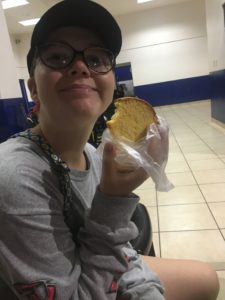
We made sure we were well stocked up on bus snacks, like this pound cake that Kendall bought at 5:30 am.
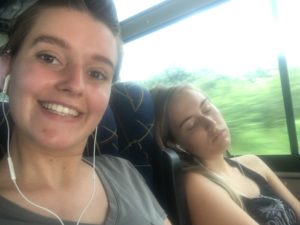

We also took naps on the first few hours of the bus to catch up on some much needed sleep. Along the we way, we observed some of the destruction from Tropical Storm Nate. Notice that half of the road is missing.
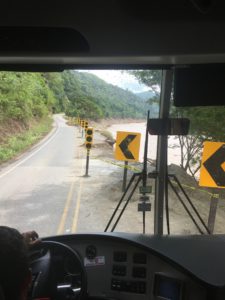
Shortly after this, we reminded the bus driver that we needed to get off at Las Tablas.
Cue cursing from the driver.
Turns out we had passed our stop awhile back and were now headed to the end of the line at San Vito. Great. We had been looking fruitlessly for the past couple hours for anything that said Las Tablas, but turns out there is nothing there to indicate that name whatsoever. After a circle of calls with our program director and one of the women at ASOMOBI, it was determined that we would buy bus tickets back in the other direction to the Las Tablas stop to meet our ride to Biolley.
And so we waited in San Vito.

The lady to the right of Mahal was holding a box of chicks. We heard the chirping and asked to confirm. Anyways, after waiting almost an hour for our bus, we were back in the right direction. We made sure to tell the driver that we needed to get to Las Tablas, that we had no idea where that was, and that we needed to be told when we reached that stop. I also reminded him 30 minutes into the trip for good measure. Then, almost 11 hours after I left my house in Heredia, we reached Las Tablas and found our ride, Oscar.
Oscar took us 40 minutes up into the picturesque mountains, where we finally arrived at ASOMOBI.
There, we met some of the community members that we would be working with that week as well as our host families. Because they understood that we were tired, the women sent us off with our host families to get much needed food and sleep.
Kendall and I were driven 15 minutes further through the mountains to the house of Norma and Miguel, and their two grown sons Jonathan and Farley.
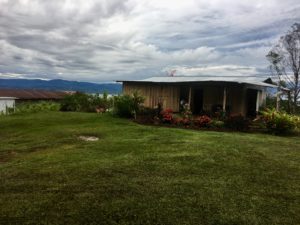
It was here all week that we ate the most delicious home cooked food and crashed each night, exhausted, before 7pm.
Day 2
Kendall and I enjoyed an early breakfast of pinto and eggs, along with coffee for her and hot chocolate for me. After, we set off for ASOMOBI. The walk took us almost a full hour uphill, during most of which I was clutching onto my inhaler for dear life. I made it, though, and the views were gorgeous. Click the link below to see a time lapse of the walk.
At ASOMOBI, we were walked through the coffee production process.
First, the coffee is picked in the fields.
Then, it’s delivered fresh to ASOMOBI, where they measure it out in this green container. Pickers are paid 10,000 colones for each of these big barrels. On average, a picker makes 18,000 colones each a day, the equivalent of almost 32 US dollars.
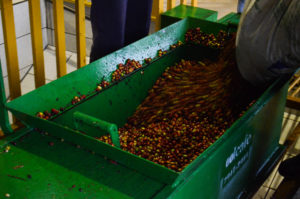
Next, the coffee flows through water to be shelled by a large machine.
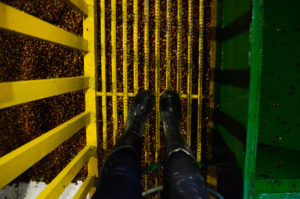
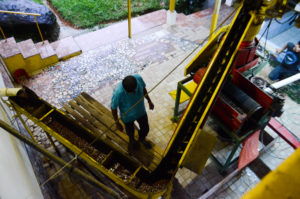
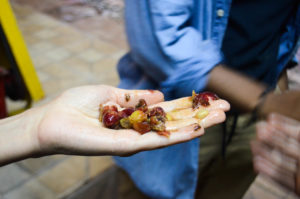

The shelled beans sit in a tub of water for 12 hours to remove a thick goopy substance from them. The shells of the beans are composted according to Costa Rican law.
After the beans are soaked, they are dried out in the sun or in a machine, depending on the weather.
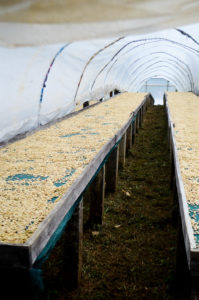
Next, the dried out beans are stored before they are sorted. Women pick out the bad beans from the bunch by hand so only the best beans are roasted for the final product.
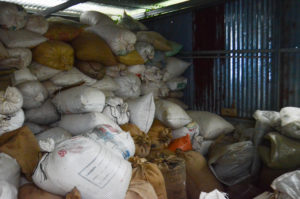
Last but not least, the beans are toasted and packaged to be sold!
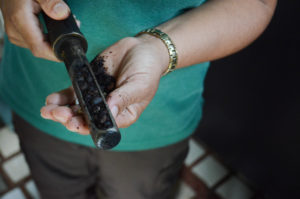
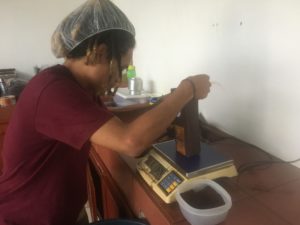
After learning about the coffee production process, we worked in the garden.
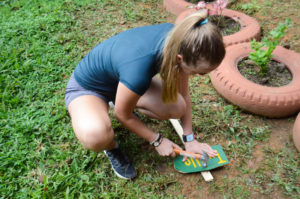
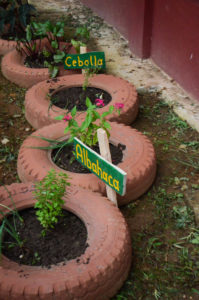
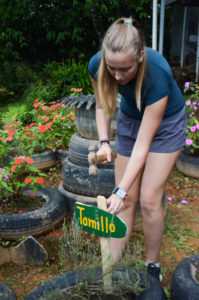
After this and painting a white wall a new cream color, we took a long awaited lunch break.
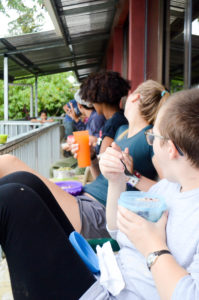
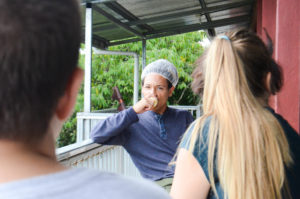
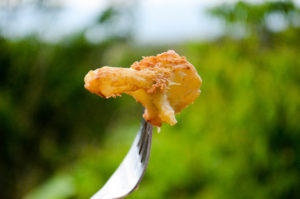
We enjoyed delicious food sent with us by our host moms, and then went on to craft time.
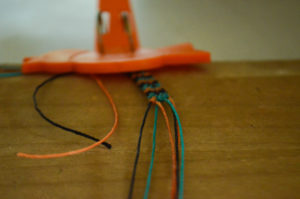
We made (or attempted to make) bracelets and necklaces to be sold by the women for extra income.
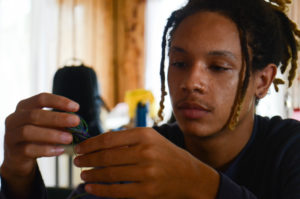
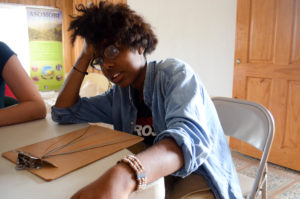
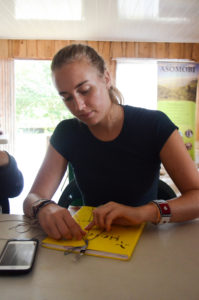
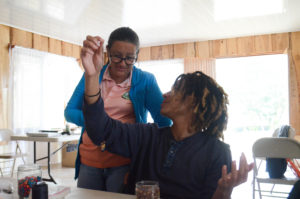
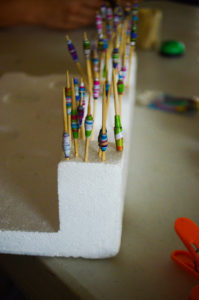
Here, you can see beads we made out of recycled newspaper to be incorporated into bracelets and earrings.
After craft time, our work day was done, and we made the long trek home in the pouring rain. Once we made it up to our house in the clouds, Kendall and I quickly showered, ate a delicious dinner, and promptly fell asleep before 7:00.
Day 3
On Wednesday morning, we didn’t have to walk all the way up to ASOMOBI. Because instead, we walked to the coffee fields. Here, we were taught how to pick the red cherries of coffee and drop them into the baskets we wore around our waists.
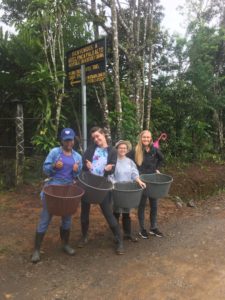
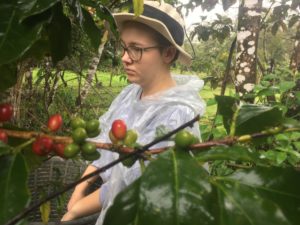
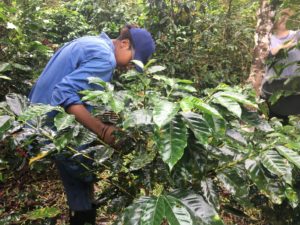
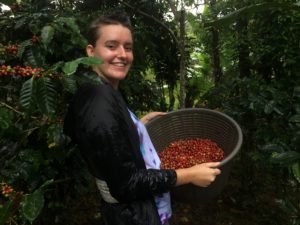
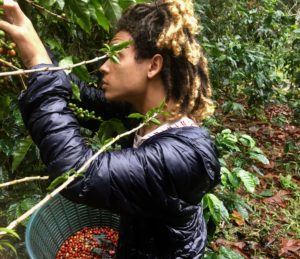

We picked coffee in the pouring rain for 2 hours. We were soaked to the bone and rain water streamed down our faces, but we had a blast picking the little red cherries. It was not lost on us, however, that coffee pickers have to do this every day, rain or shine. Oftentimes, the kids of the community pick coffee for a couple of hours each day before going to school. One child we saw toting a basket looked to be no older than 4 years old.
After attempting to dry off, I met this super cute dog, and then Mahal and I worked to package coffee. We got into a rhythm of measuring and weighing out exactly 5.17 kg and then methodically sealing the bags. It was oddly therapeutic and we got to wear some sweet hair nets.
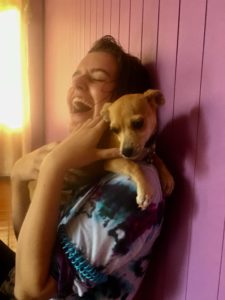
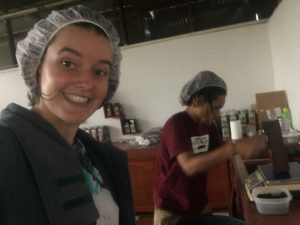
Then, after lunch, we watched the children practice dancing – they dance with the traditional skirts – then the others in my group attempted to teach an English class.

I heard that the class was a disaster, so they resorted to playing hide and seek instead. I hid myself away in the toaster sorting beans. I’m not that great with kids…
After the failed English class, we once again made the long walk home, but at least this time there were clear skies and scenic views.
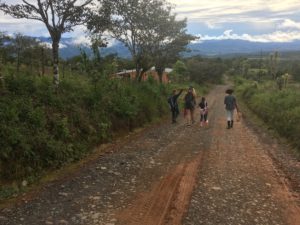
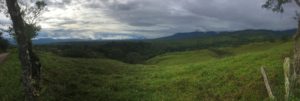
And, once again, Kendall and I showered, ate Norma’s amazing food, and crashed around 7:00.
Day 4
After surviving the walk to ASOMOBI, I was able to immerse myself in painting. The women wanted a mural of a tree and monkeys on a wall in their meeting room, and I was prepared to deliver. The brushes and the cloying paint fumes took me back to my junior and senior years of high school, when I was perpetually covered in paint. I worked from 8 am to 3 pm on this mural, with an hour break for lunch. I’m pretty sure that the mix of paint fumes and the strong smell of something burning from the running coffee toaster addled my brains, but I’m still happy with the end result of the mural.

We sketched the tree and leaves out using a projector, but I free handed the monkeys after the women continued to request more and more of them be painted on the wall. The white space in the middle of the painting is where they will project videos and presentations for meetings and events.
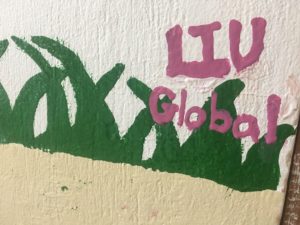
And of course, I made sure we left our mark on ASOMOBI.
After finishing the mural, we had to bid ado to the amazing women that we had learned so much from in only a few days. We thanked them for everything and set off on our last walk home. Not too far into a walk, a kind woman and her son rescued Kendall and I from our walk in the rain. I may be the person in my program to have hitchhiked the most. Oh, well. Do you see the expressions of joy on our faces?
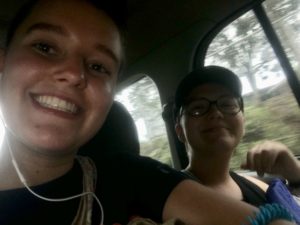
Despite not having to walk the full hour home, Kendall and I were still wiped out, and managed to fall asleep even earlier, at 6:30.
But not before getting photos with our lovely host mom, Norma. Just appreciate the height differences.
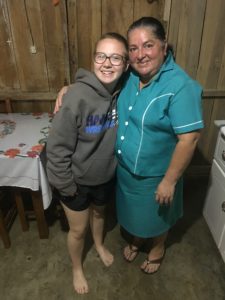
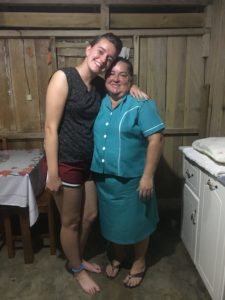
Day 5
Kendall and I had to make the hardest goodbye on our last morning: the goodbye to Norma’s food. I enjoyed my last plate of pinto and eggs, along with my steaming mug of hot chocolate. My steaming mug of hot chocolate that apparently my family made fun of me for. So I guess it was laughable that while working at a coffee mill, I chose to drink something ‘meant for kids.’ What can I say? Hot chocolate is amazing. And I can’t stand coffee.
Never fear, though, I am bringing back a few bags of ASOMOBI coffee to the states for others to enjoy. I’ve heard that Costa Rican coffee, and ASOMOBI coffee in particular, is somewhat fruity and chocolatey.
After making our goodbyes, we set off for another long bus ride home.
We made it back to Heredia several hours later, thankful for the opportunity we had to work for even just a week with such an incredible organization.

How’s my gdandchild? I’m fo!lowing you with every blog. Please be careful walking alone in the dark! See you in December!! Love, Connie